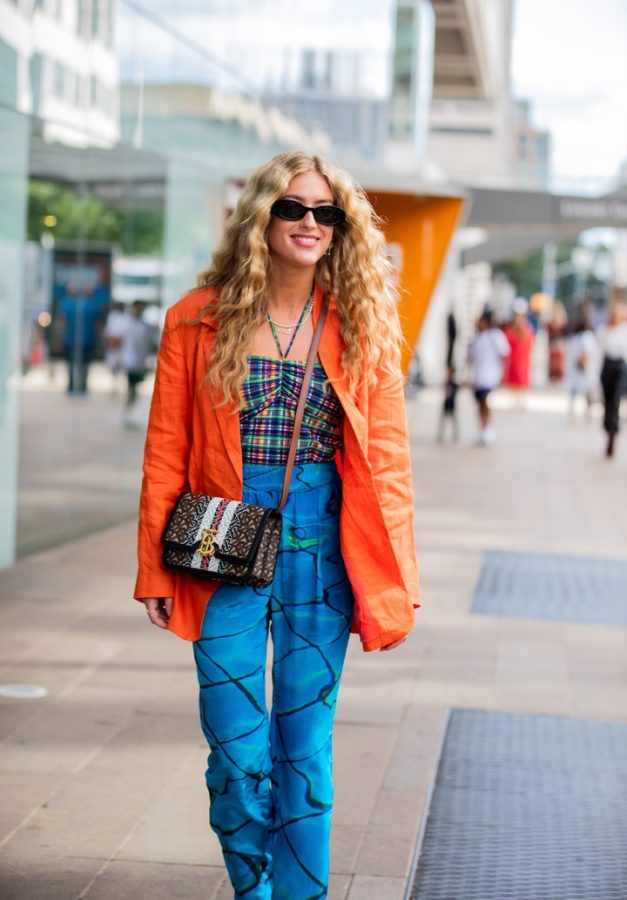Creativity inspires street-style food, fashion, and art

More stories from Coco Corey
A street style look from New York Fashion Week.
If you go to the Vogue website and click on the first tab which, of course, is “fashion,” before “designers” or “trends,” you’ll see “street-style.”
Street-style has earned itself that spot because there’s a certain legitimacy that comes from the streets. First off, anything that originates in the streets usually has gone through a different level of approval; no one is being paid to agree with anyone else. Instead, street style begs for true, real, unadulterated opinions. Fashion, food, and culture from the streets is generally coming from those without the money or power or influence to be anywhere else; there is a certain purity that comes with that because nobody is buying anyone else’s approval. If it originates on the streets, it’s either judged as really good or it’s failed. It’s as simple as that. Big fashion knows it. The culinary world knows it. The art world knows it.
The first time I heard the word “street” used as an adjective, it was in front of the word tacos. This didn’t make them sound any more appetizing than other tacos, though I had to look up the difference. If I have piqued your curiosity, the answer was simply size. Street tacos are smaller and thus easier to handle. While not exciting, it made sense. Who doesn’t want a taco that’s easier to hold? Street tacos are made up of protein, cilantro, and onion; they don’t include lettuce, cheese, tomato, sour cream, or anything else that you may see on your average restaurant taco, but the three ingredients that are there are simple and delicious. I can see why they are so popular. I questioned if the simplicity of street-style food meant also that street fashion and street art were more simplified.
The answer was the direct antithesis. If the reason street food is popular for its basics, street fashion is popular for its complexity. There is no “one size fits all.” It is celebrated for its individuality, and it represents individual backgrounds in so many different ways that no label can represent. If you have read any of my fashion editorials, you know how I feel about Harajuku, Japan. Insane creativity comes from the streets of Harajuku–the fashion capital of Japan–but it does not originate from fashion houses or major labels, or even boutiques—it is seen on the teens walking down the streets. Their ingenuity in fashion inspires those big fashion labels as well as celebrities and the entertainment industry alike. However, their style can’t be truly translated into any line or collection. The beauty of street style fashion is that it is so unique to the individual that no two people can wear it the same.
This freedom and uniqueness translates to that art world as well. Street art is typically created by those who are not necessarily considered artists. These are people with day jobs that begin their art careers, much like one of my favorite artists, Banksy. They start as graffiti or stencil artists and their canvas are cement walls that they paint at night. Many of them are social commentators and they find their voice through this medium.
Street-style, be it art, food, or fashion, is vetted through the public, and only the most creative and celebrated become trends. The hottest trends in the art, fashion, and culinary worlds come from the streets for good reason.

Coco Corey is a senior entering her second year writing for The Central Trend. Coco plays on the tennis team, and she is also one of the four student section...



























































































